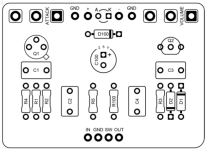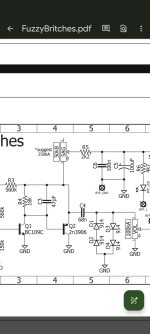First time posting here, but certainly not the first time perusing! Wow, incredible community here.
I recently made a Mask Audio Dark Grime 1-knob fuzz as my first build, and it thankfully went well. Tenth time soldering!
Just ordered some boards from PedalPCB, including the Executive (Bosstone). My favorite circuit, as I'm a huge Spirit fan.
I'd love to add a voltage starve control to it like in the Mythos Hephaestus (it's the ONLY knob on that one). I realize the Trumpeter has something like that, and I plan on building one of those as well. I'd like to start with the classic Bosstone with just this one mod, though.
Sounds like some Bosstone-based pedals might have a transistor bias knob, while some (the Mythos?) have an overall voltage control. Please correct me if I'm wrong! Not sure how different the effect would be between those two options.
Any advice would be incredible, thanks!
I recently made a Mask Audio Dark Grime 1-knob fuzz as my first build, and it thankfully went well. Tenth time soldering!
Just ordered some boards from PedalPCB, including the Executive (Bosstone). My favorite circuit, as I'm a huge Spirit fan.
I'd love to add a voltage starve control to it like in the Mythos Hephaestus (it's the ONLY knob on that one). I realize the Trumpeter has something like that, and I plan on building one of those as well. I'd like to start with the classic Bosstone with just this one mod, though.
Sounds like some Bosstone-based pedals might have a transistor bias knob, while some (the Mythos?) have an overall voltage control. Please correct me if I'm wrong! Not sure how different the effect would be between those two options.
Any advice would be incredible, thanks!







